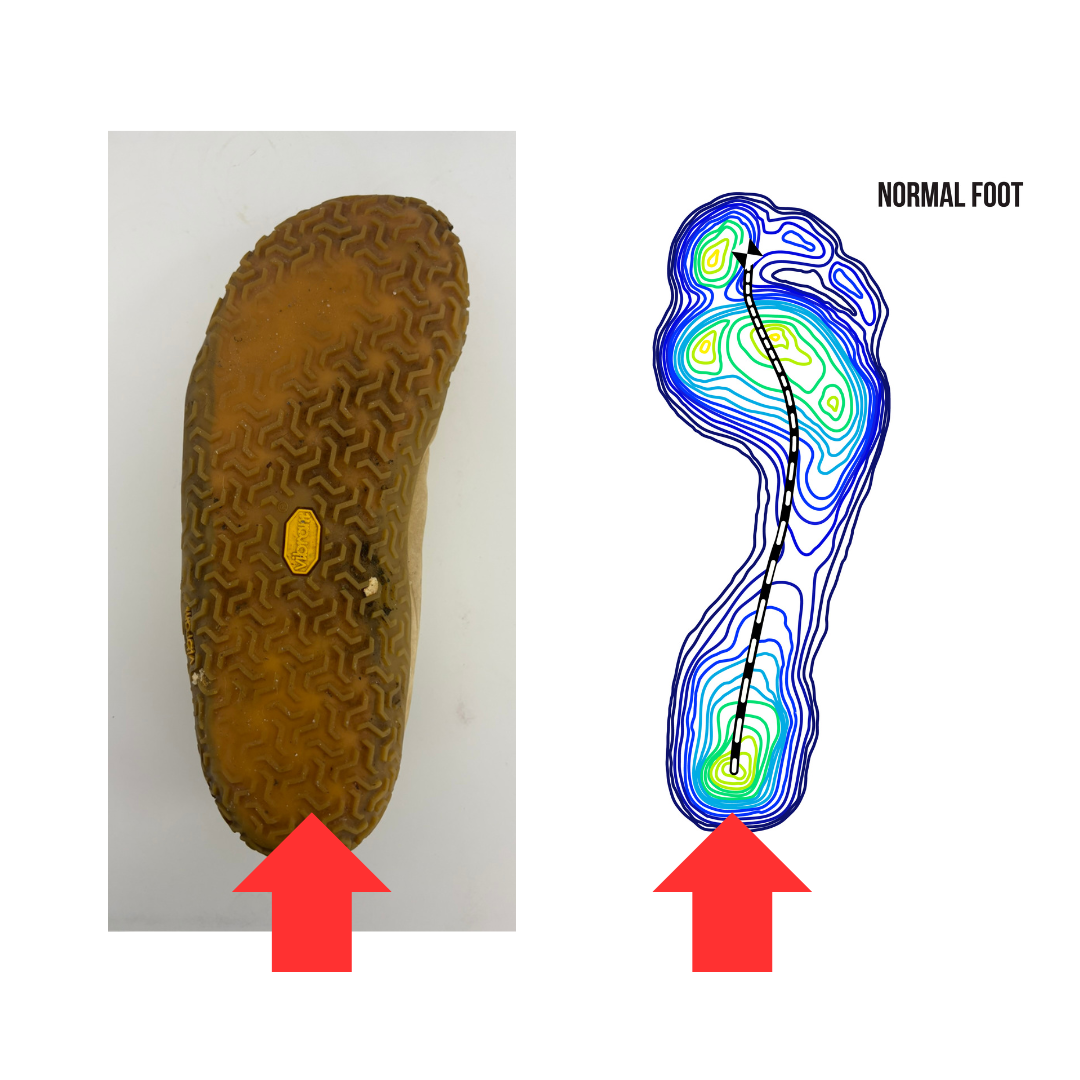
You will notice from the image that the normal foot showing pressure on the foot is centred around the heal 90% and the rest spread across the ball of the foot as used for balance. The shoe follows a similar pattern but limited wear on the heal and much more wear on the ball of foot.
The heel shows a circle of pressure where most plantar fasciitis occurs and spreads due to activity. Its important to note that the normal foot is showing pressure wile standing and forms the basis for all orthotics and insoles for plantar fasciitis development and design.
A couple of obvious questions spring to mind:
- With this the basis, why do they not focus on the heel and ball of the foot for support and importantly cushioning?
- Secondly why do they build up the arch support? I assume it’s the try and reduce the load on the heel to reduce the pain from plantar fasciitis.

The shoe shows a similar pattern for wear to the normal foot image. However, if you look closely the wear is most at the ball and down the outer edge of the foot where it will have contact with the ground and least on the heel.
So what is going on?
Firstly its important to note that the wear on the shoe, a barefoot, is from walking with correct walking mechanics of heel, weight transition and ball, toe drive off.
Not Standing!
So correct walking means that the pressure or load on the heel is for a extremely small amount of time. Important for plantar fasciitis, the outer edge of the foot provides support in the transition and the ball of the foot provides the power.
The foot does not need arch support it needs correct movement mechanics to heal!
To start using your foot correctly and load and apply pressure in the correct way to help reduce pain and heal your plantar fasciitis your foot needs to be straight.

When the majority of people stand they have their feet slightly turned out to aid with sideways balance. The image of the normal foot reflects this and you can see that the difference with the foot straight in the shoe image.
The line of foot pressure is different and pressure on your plantar fasciitis will be different, in most cases reduced. When walking you need to land on your heel with your foot straight, but, focus mostly on the drive or push off. This will reduce your pain and significantly increase your walking speed.
